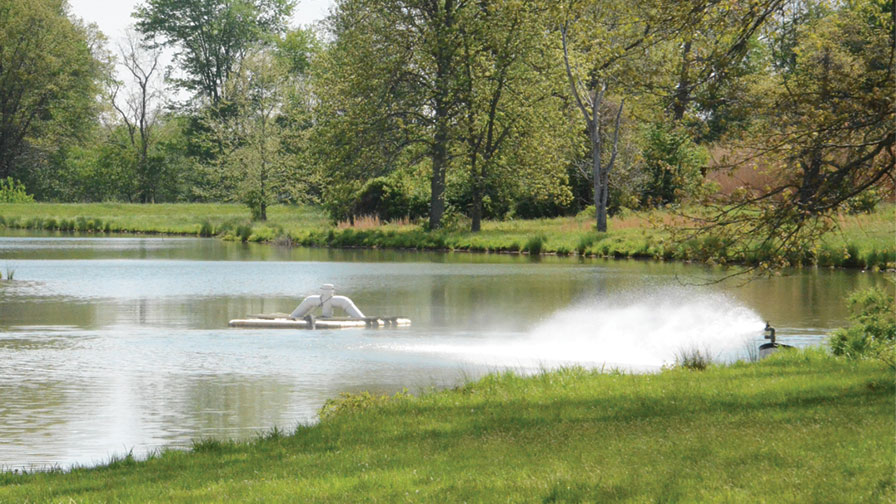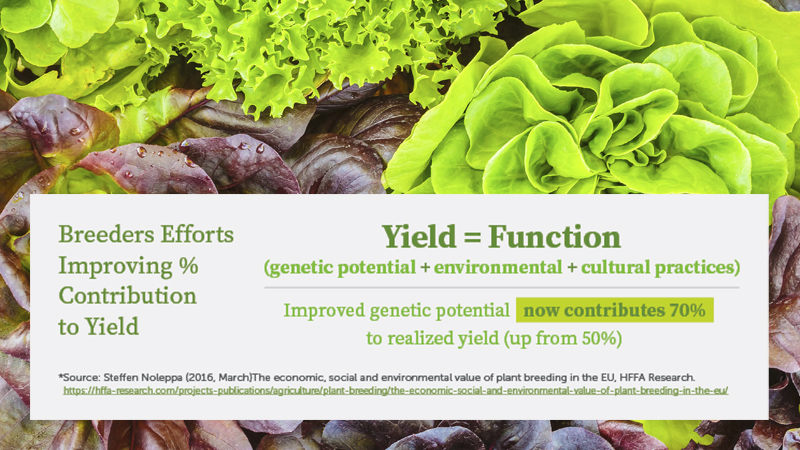Water is a Must for Berry Crops
Proper irrigation of berry crops takes an abundant supply of high-quality water delivered at the right rate, time and location. Having an abundant source of water is a must for a thriving berry growing business. When I talk to fruit growers about the importance of crop irrigation, I often tell them that they are in the business of turning water into money.
I can still recall the droughts of 1988 and 2012 in the Midwest. Since many berry crops are perennial, quite a few growers suffered major plant losses then. We all know it takes a few years to get most berry crops established. The lingering effect of the droughts was devastating.

Figure 1: A pond of sufficient size is a good option for irrigation water for berry growers. (Photo: Gary Gao)
Water Sources
Growers have three main sources of water: surface water, underground water, and municipal water. Surface water typically comes in the form of a pond. The pond size is dependent on how much berry crops you need to water. According to Penn State University, “2 acres of watershed tributary provides approximately 1-acre foot of water annually. (An acre-foot is the volume that would cover 1 acre to a depth of 1 foot.) Much of this water (about 40% to 60%) is lost to seepage through the pond bottom and to evaporation on the pond surface. Therefore, you will need about 4 acres of watershed to supply 1-acre foot of irrigation water per year.”
A pond is what we have for irrigating many of our research plots at The Ohio State University (OSU) South Centers at Piketon, OH, (Figure 1). We pump water out of this irrigation pond to water our research plots. I was told that our main water lines are large enough so that we can water all of our plots simultaneously. The size of our irrigation pond is about 4 acres, said Wayne Lewis, the farm manager at OSU South Centers.
Fortunately, we have not had to test the upper limit of our irrigation capacity yet. If a grower wants to have a pond dug, he/she should check with their local Extension professionals and the folks with Soil and Water Conservation District for site suitability for a pond.
Underground water in the form of a well is another option, provided that there is sufficient water available in the underground aquifer. With wells, we are talking about “location, location, and location.” Hopefully, this is an option on your farm.
I got to visit with Wesley Ebenhack of Ebenhack Bros. LLC in Circleville, OH. Wesley and his brother TJ grow apples, blackberries, peaches, pumpkins, and strawberries. They are quite blessed with an abundant supply of underground water.
Ebenhack said that “my irrigation water source is from wells. Most of my irrigation water comes from a 60 gpm (gallon-per-minute) well with a backup 30 gpm well. We also have a 20 gpm well for the pumpkin area.” Wesley showed me the pump house for his berry crops (Figure 2). His irrigation was set up to irrigate and fertigate his fruit crops. He also wanted to inject acid to lower his water pH.
Wesley showed me the pump house for his berry crops (Figure 2). His irrigation was set up to irrigate and fertigate his fruit crops. He also wanted to inject acid to lower his water pH.
Since each state has different laws and regulations, growers are encouraged to check with their local water regulatory authorities before they drill wells.
The third possibility is municipal water, but this option can be cost-prohibitive for many growers. There may also be local restrictions on water usage.

Figure 2: Wesley Ebenhack of Ebenhack Bros. LLC in Circleville, OH, check on his injector and the set-up for acid injection. (Photo: Gary Gao)
Keep an Eye on Quality
Water quality can be a major issue too, especially for crops like blueberries. One obvious problem is sand and other particles that can plug up the emitters. Wesley uses sand filters. A cyclone-type sand filter has worked well for him. Another problem can be high water pH and alkalinity. Growers are encouraged to have their water tested for alkalinity, pH, and dissolved nutrients.
“I have my water tested four times a year for bacteria to meet GAP certification requirements. I have also tested the pH and mineral levels in the past. I am in the process of hooking up an acid pump for pumping sulfuric acid to lower the water pH,” Ebenhack said.
A well-designed irrigation system is also another critical piece. Growers are strongly encouraged to work with reputable irrigation suppliers in their area for design and installation. It is important to get it done right the first time. Ebenhack had worked with one supplier for the initial design and installation but had to work with another one to make his irrigation system work for him.
Irrigation scheduling is a big issue by itself. I have seen highly sophisticated irrigation systems on the West Coast where just about every drop of water is delivered through irrigation. In the Midwest, we get variable amounts of rain during the summer months. Hence, our irrigation is supplemental. The appearance of soil and the plants can be good indicators. “A big part of the watering intervals is based around the fertilizer scheme through the drip. I also feel the soil in the rows to decide if water is needed,” Ebenhack said. I would check the soil around the root zone for a more accurate gauge of the water status.
Penn State University’s advice is to “schedule irrigation for most crops in the northern United States, assume that 1.0 to 1.5 inches of water are required weekly (the pan evaporation amount). The irrigation schedule can account for average weekly precipitation and can help you plan irrigation to apply the difference. However, rainfall amounts are unpredictable, so this method can lead to deficits or excesses that can limit crop performance. For small-fruit crops, growers may wish to raise the water demand to 2 inches per week during fruit development, especially on well-drained soils.”
In summary, I will use one of my sports analogies, which is “Your best ability is availability.” You have to have enough available water first. You will then make sure that water is of high quality. You will need to use a reliable and efficient irrigation system to deliver that water at the right amount, right time, and right place. It is easier said than done. With some tweaking and experience, you will be able to turn water into money in no time!










